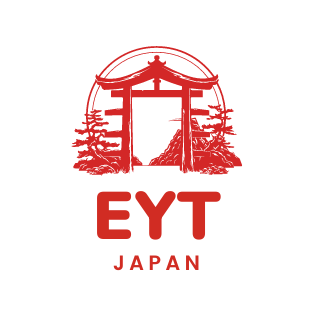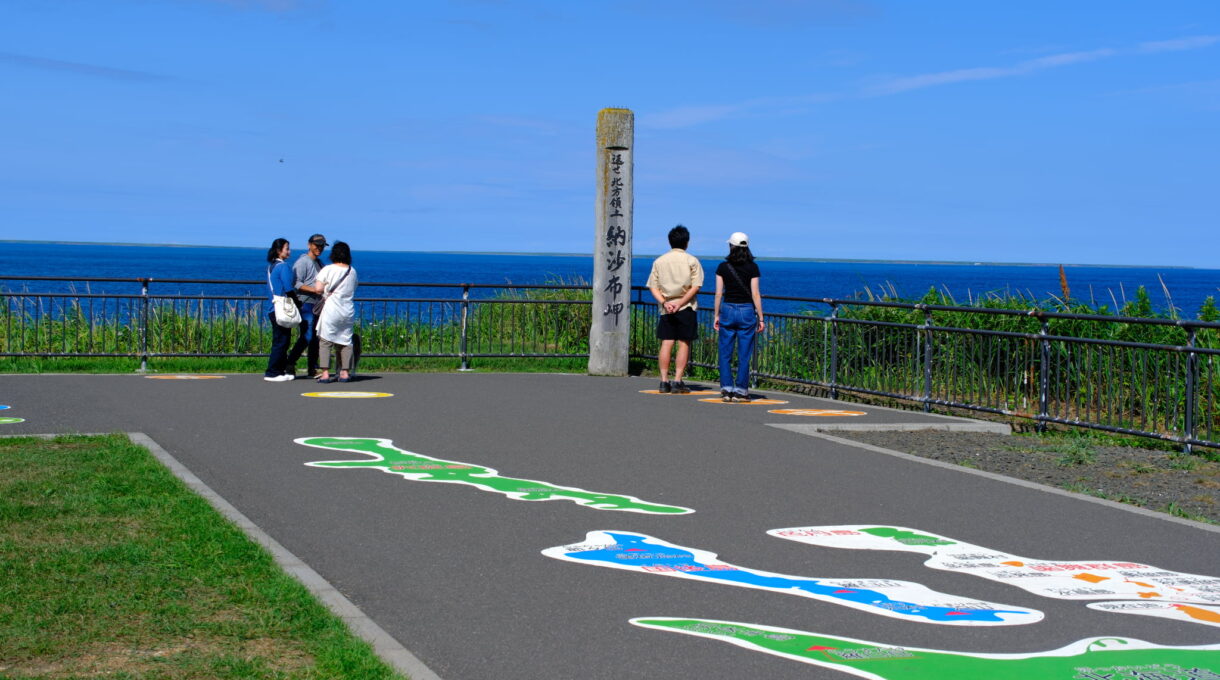Cape Nosappu, located at the eastern tip of mainland Japan, marks the nation’s farthest frontier.
On clear days you can see the Habomai Islands across the sea. Once known as a town of lighthouses, the cape now stands as a symbolic site that conveys the history of the Northern Territories dispute.
Around the cape are museums, observation towers, and monuments that let visitors feel the presence of Japan’s border and a quiet sense of reflection.
How to Get to Cape Nosappu
The cape is accessible by bus from Nemuro Station.
This route—operated by Nemuro Kotsu—is the most common way to reach Japan’s easternmost point.
-
Bus line: Nemuro Kotsu “Nosappu Misaki Line”
- Boarding point: Platform No. 1 at Nemuro Station — make sure to take the bus bound for “Nosappu Misaki.”
-
Travel time: approx. 50–55 minutes
-
Fare: ¥1,090 (one way) / ¥1,970 (round trip)
-
Bus stop: “Nosappu Misaki” (final stop)
-
Frequency: around 5 round trips per day (depends on season)
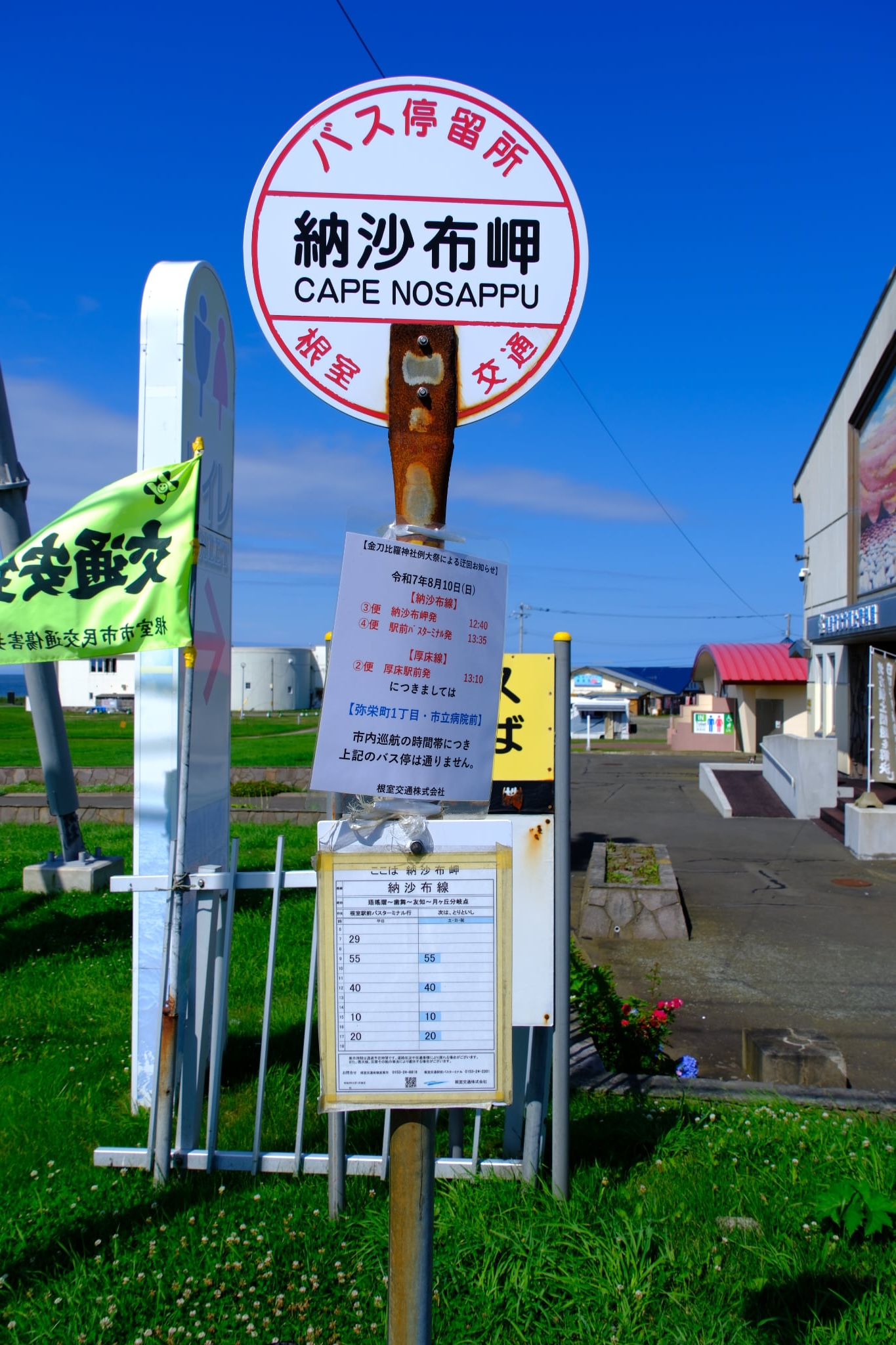
The bus stop at Cape Nosappu.The bus stops directly in front of Cape Nosappu, so you can reach the cape easily without getting lost from the stop.
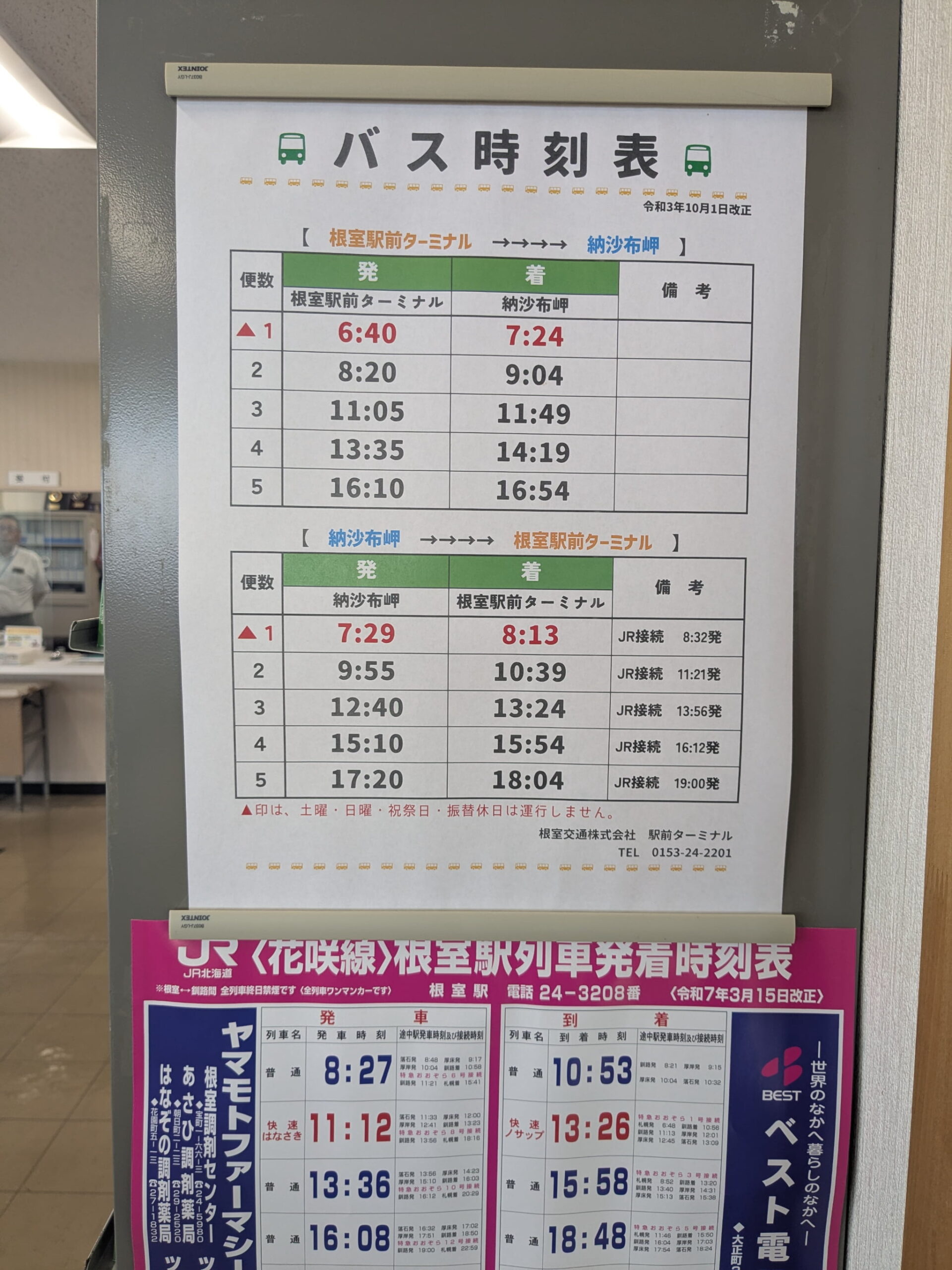
Bus Timetable
The upper table shows departures from Nemuro Station and arrivals at Cape Nosappu.
The lower table shows departures from Cape Nosappu and arrivals at Nemuro Station.
The left column indicates the departure time, and the right column shows the arrival time.
Trips marked with ▲ do not operate on weekends or national holidays.
Example of how to read the table:
– Depart Nemuro Station at 11:05 a.m., arrive at Cape Nosappu at 11:49 a.m.
– Depart Cape Nosappu at 9:55 a.m., arrive at Nemuro Station at 10:39 a.m.
Tips for Taking the Bus
-
Buy a round-trip ticket at the Nemuro Station Bus Terminal.
It’s slightly cheaper than two one-way tickets and guarantees your return seat. -
Tickets must be purchased in advance.
You cannot buy them on board, so purchase them at the ticket window before boarding. -
The bus departs from Platform No. 1 at the Nemuro Station Terminal.
Signs clearly indicate “for Cape Nosappu.” -
The last return bus leaves around 4 p.m.
If you plan a day trip, check the timetable in advance to avoid being stranded.
About Cape Nosappu
Cape Nosappu (145° 49′ E) is Japan’s easternmost point.
This area is known for its strong winds and frequent fog, especially in summer.
The cape’s symbol, the Nosappu Lighthouse, was first lit in 1872 and is one of the oldest Western-style lighthouses in Hokkaido.
On clear days you can see the Habomai Islands and Kunashiri Island just across the water.
Nearby stand the Bridge of Four Islands Monument and the Home of Nostalgia (Bokyo-no-Ie), sites that symbolize the hope for peaceful reunion with the Northern Islands.
Visiting this cape is less about sightseeing and more about feeling Japan’s quiet borderland reality.
Tips for Taking the Bus
-
Buy a round-trip ticket at the Nemuro Station Bus Terminal.
It’s slightly cheaper than two one-way tickets and guarantees your return seat. -
Tickets must be purchased in advance.
You cannot buy them on board, so purchase them at the ticket window before boarding.
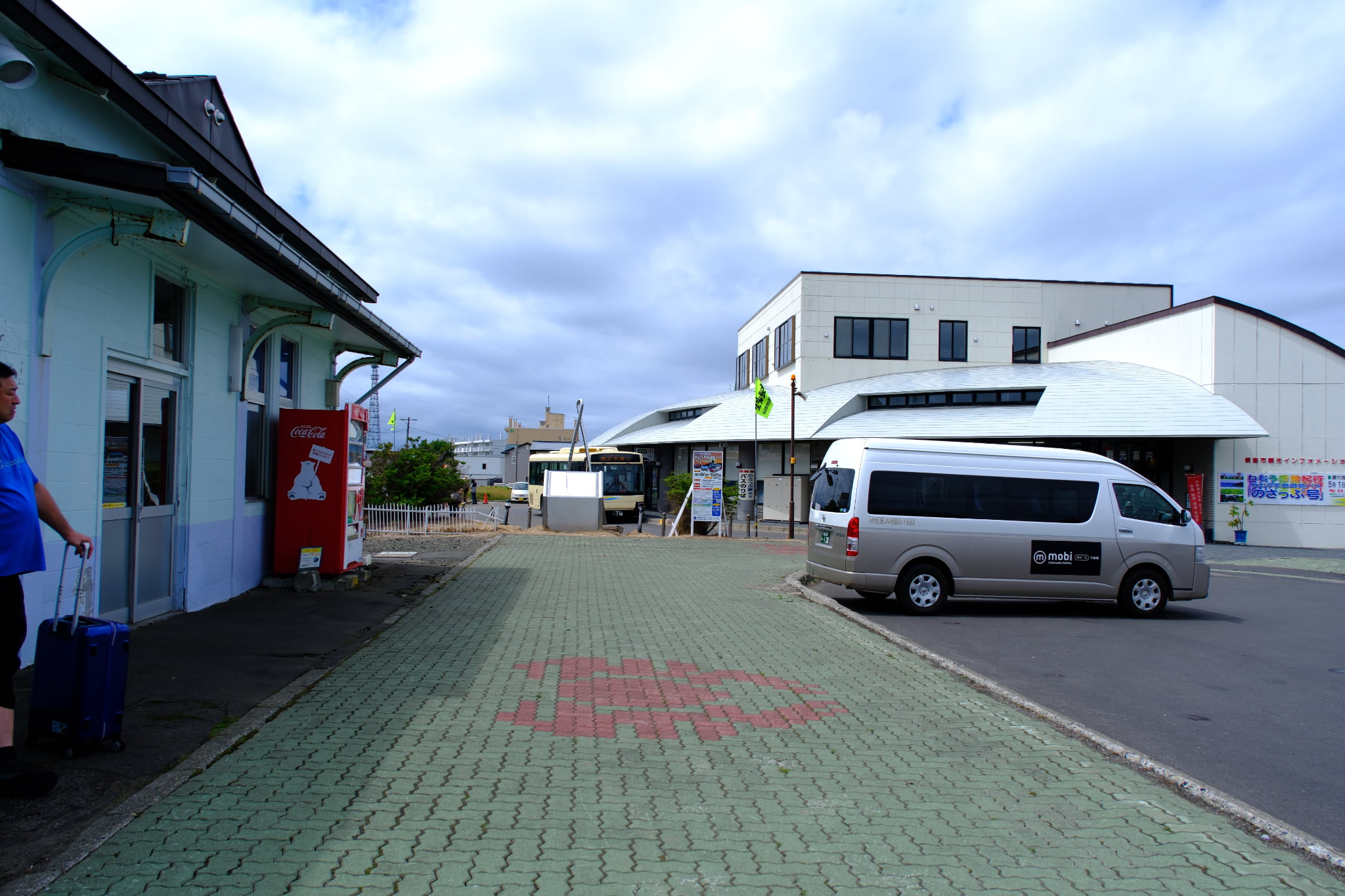
The bus terminal is located to the left of Nemuro Station.
It’s right next to the station, so you won’t have any trouble finding it.
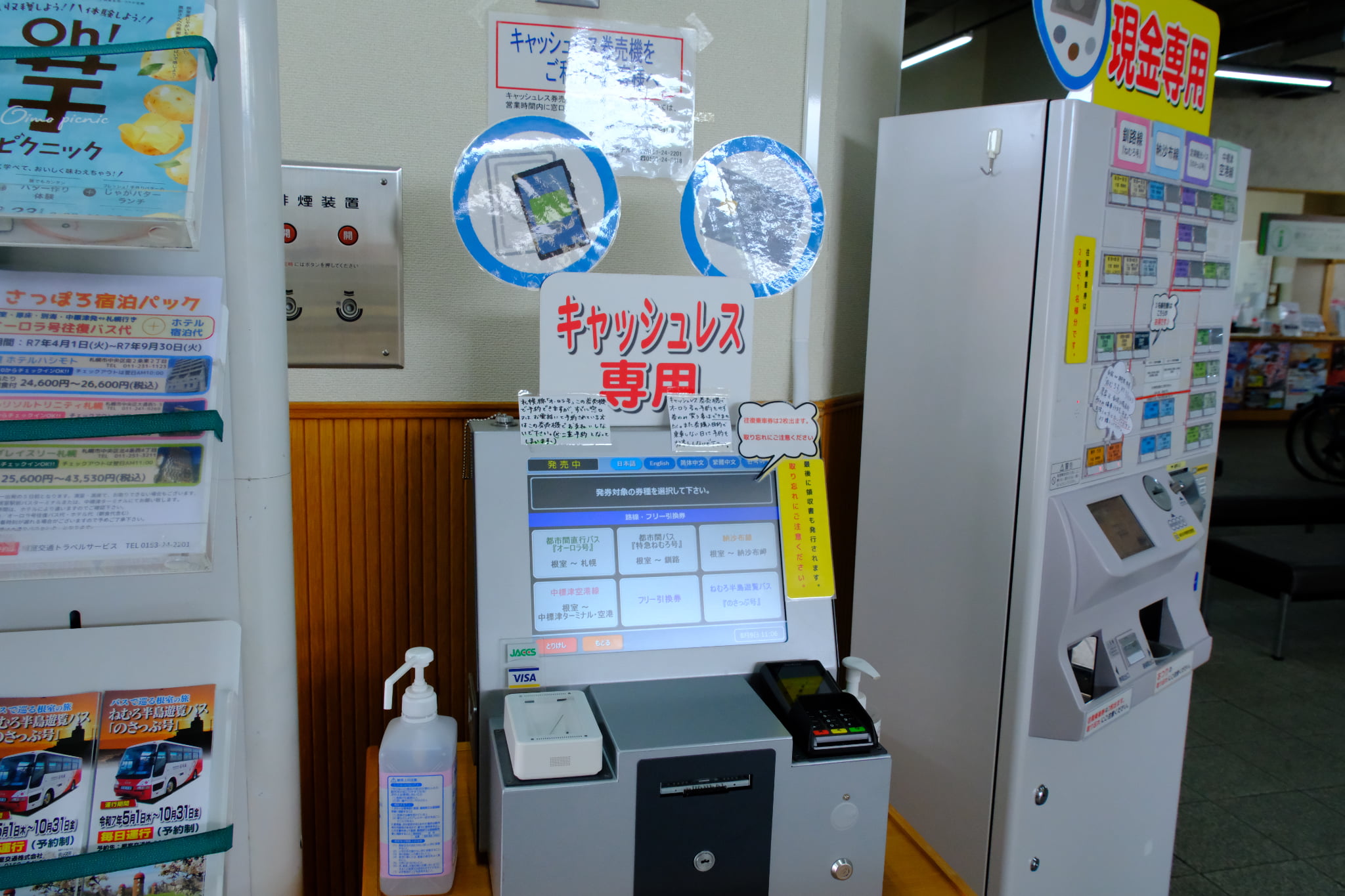
Bus Ticket Machines
The ticket machines are located at the terminal — the one in the back is for cash only, while the one in the front accepts credit cards.
You can purchase your round-trip ticket here before boarding.
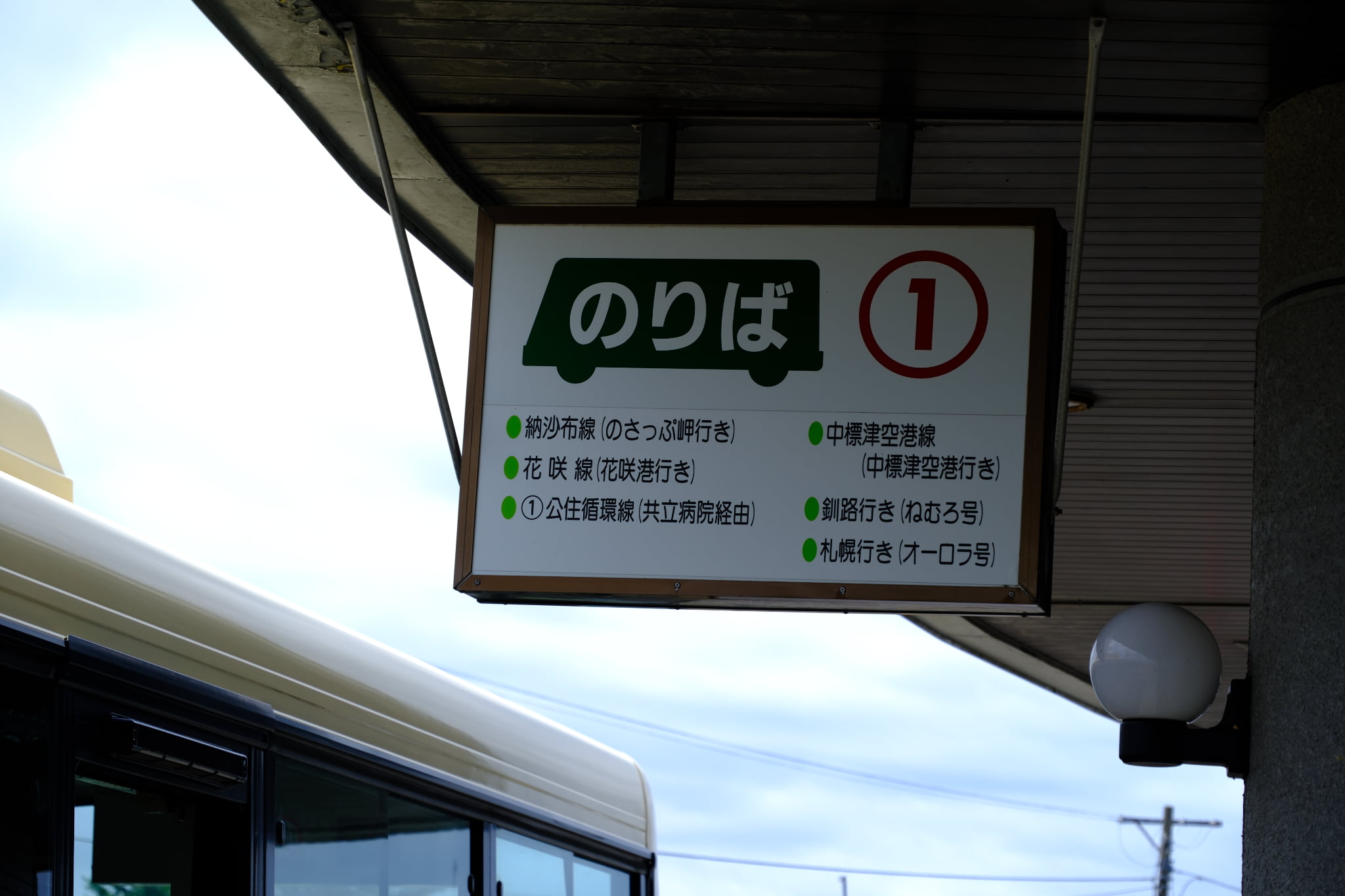
The bus departs from Platform No. 1.
The terminal isn’t very large, so you’ll find it easily once you step inside.
About Cape Nosappu
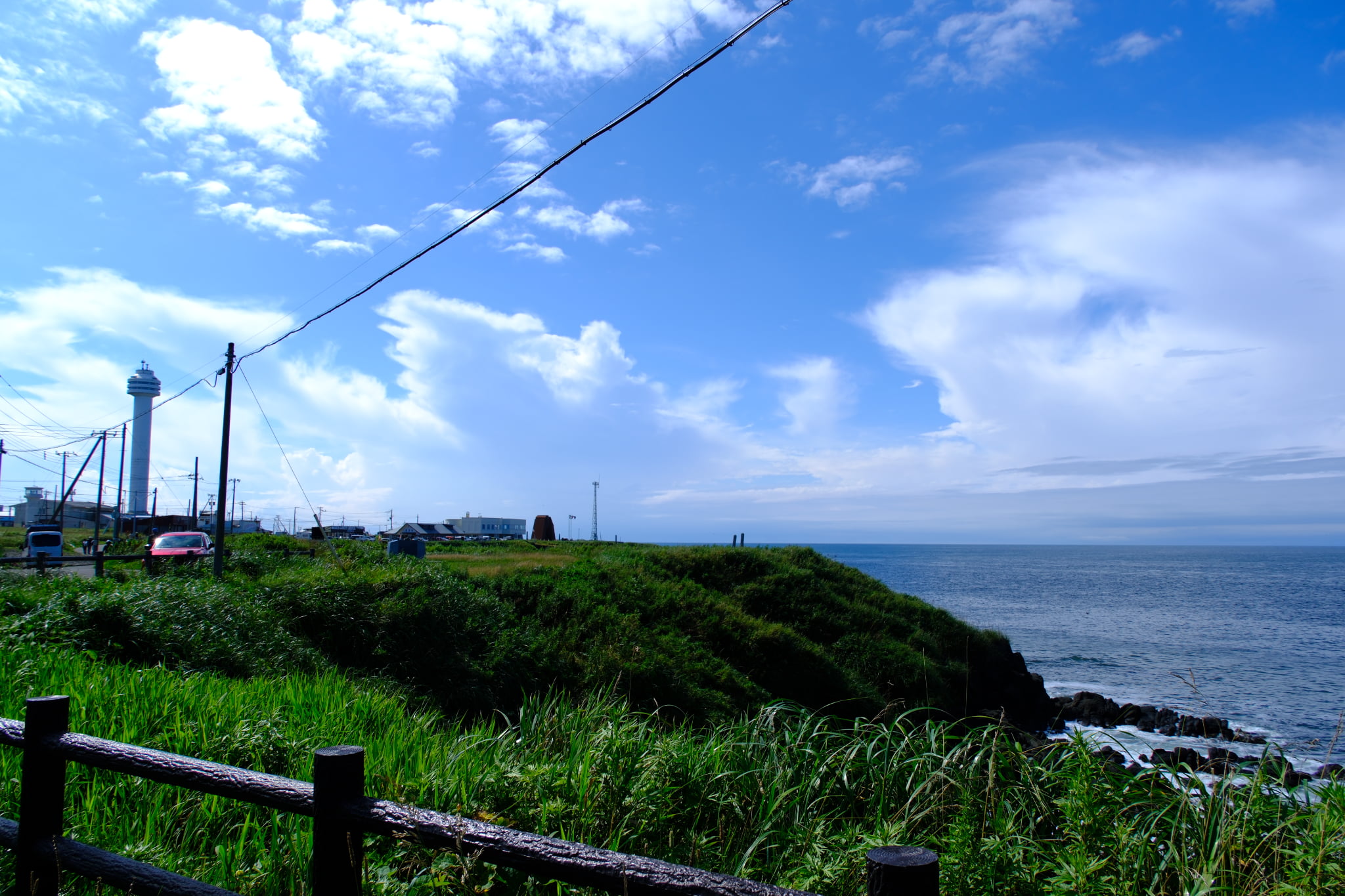
Cape Nosappu (145° 49′ E) is Japan’s easternmost point.
This area is known for its strong winds and frequent fog, especially in summer.
The cape’s symbol, the Nosappu Lighthouse, was first lit in 1872 and is one of the oldest Western-style lighthouses in Hokkaido.
On clear days you can see the Habomai Islands and Kunashiri Island just across the water.
Nearby stand the Bridge of Four Islands Monument and the Home of Nostalgia (Bokyo-no-Ie), sites that symbolize the hope for peaceful reunion with the Northern Islands.
Visiting this cape is less about sightseeing and more about feeling Japan’s quiet borderland reality.
History of Cape Nosappu
-
1600s – 1800s: A center of northern trade and fishing, connecting Ezo (Hokkaido) with Sakhalin and Russia.
-
1872: The Nosappu Lighthouse was constructed to secure maritime routes in the North Pacific.
-
After 1945: The Habomai and Shikotan Islands were occupied by the Soviet Union, and Cape Nosappu became a symbol of Japan’s Northern Territories movement.
-
From the 1970s to today: The area has been developed as a site for peace education and remembrance, with memorial monuments and museums welcoming visitors throughout the year.
Cape Nosappu and the Surrounding Area
Cape Nosappu
At the tip of the cape stands the white Nosappu Lighthouse, surrounded by several monuments.
From the observation deck, you can see the Habomai Islands on clear days, and this is also one of the best places in Japan to watch the earliest sunrise.
The Bridge of Four Islands Monument symbolizes the four Northern Islands.
Many visitors quietly put their hands together in prayer here, reflecting on the history and meaning behind the monument.
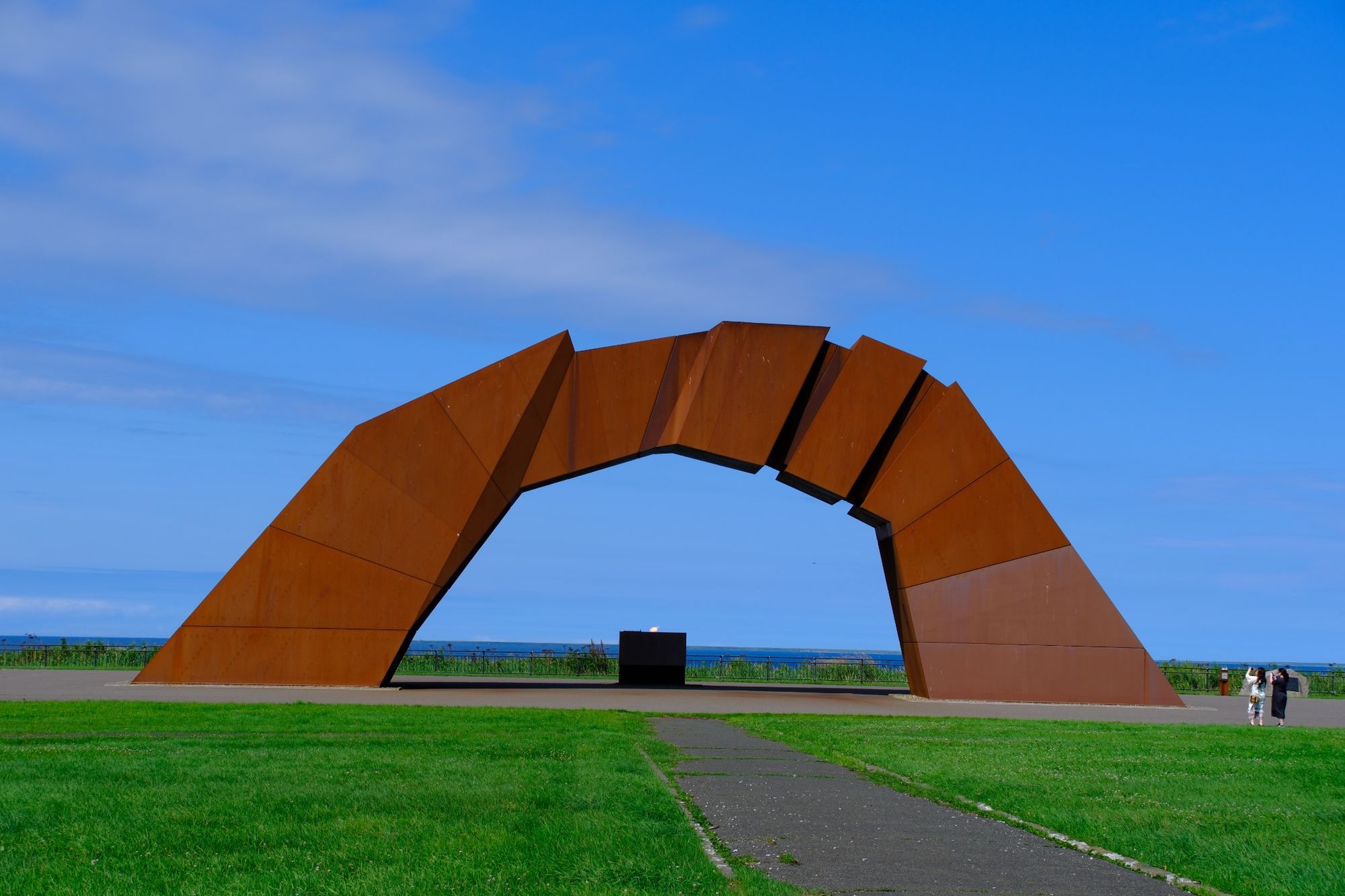
This is the Bridge of Four Islands Monument.
It is quite large in scale, representing the four islands as separate blocks that connect together to form one great bridge.
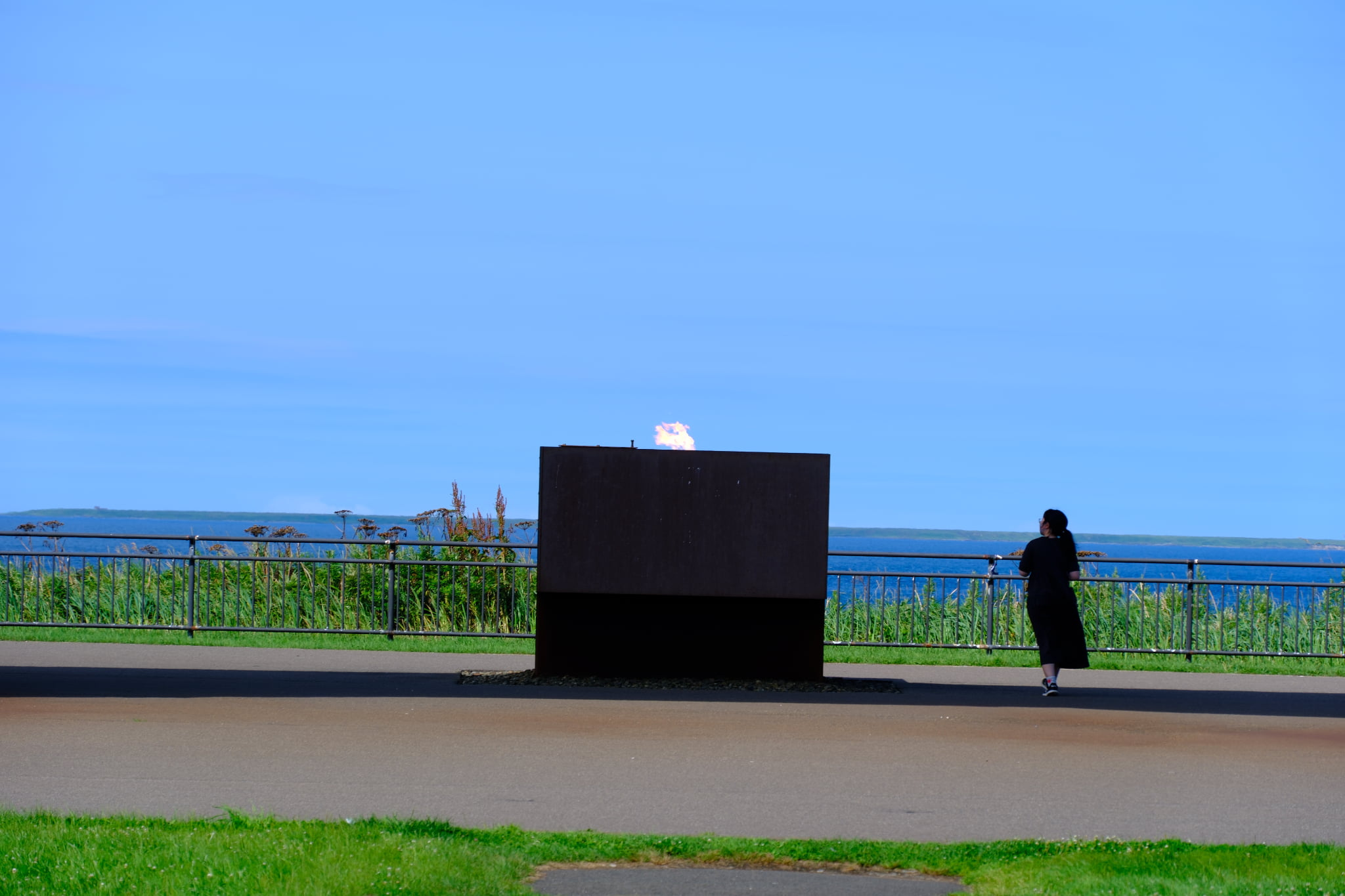
At the lighthouse platform, the Flame of Prayer continues to burn.
This flame originated from a naturally ignited fire on Hateruma Island in Okinawa, traveled across Japan, and was finally brought here to Cape Nosappu.
Also called the Flame of Peace, it is built to withstand wind and rain and continues to burn as a symbol of the wish for peace.
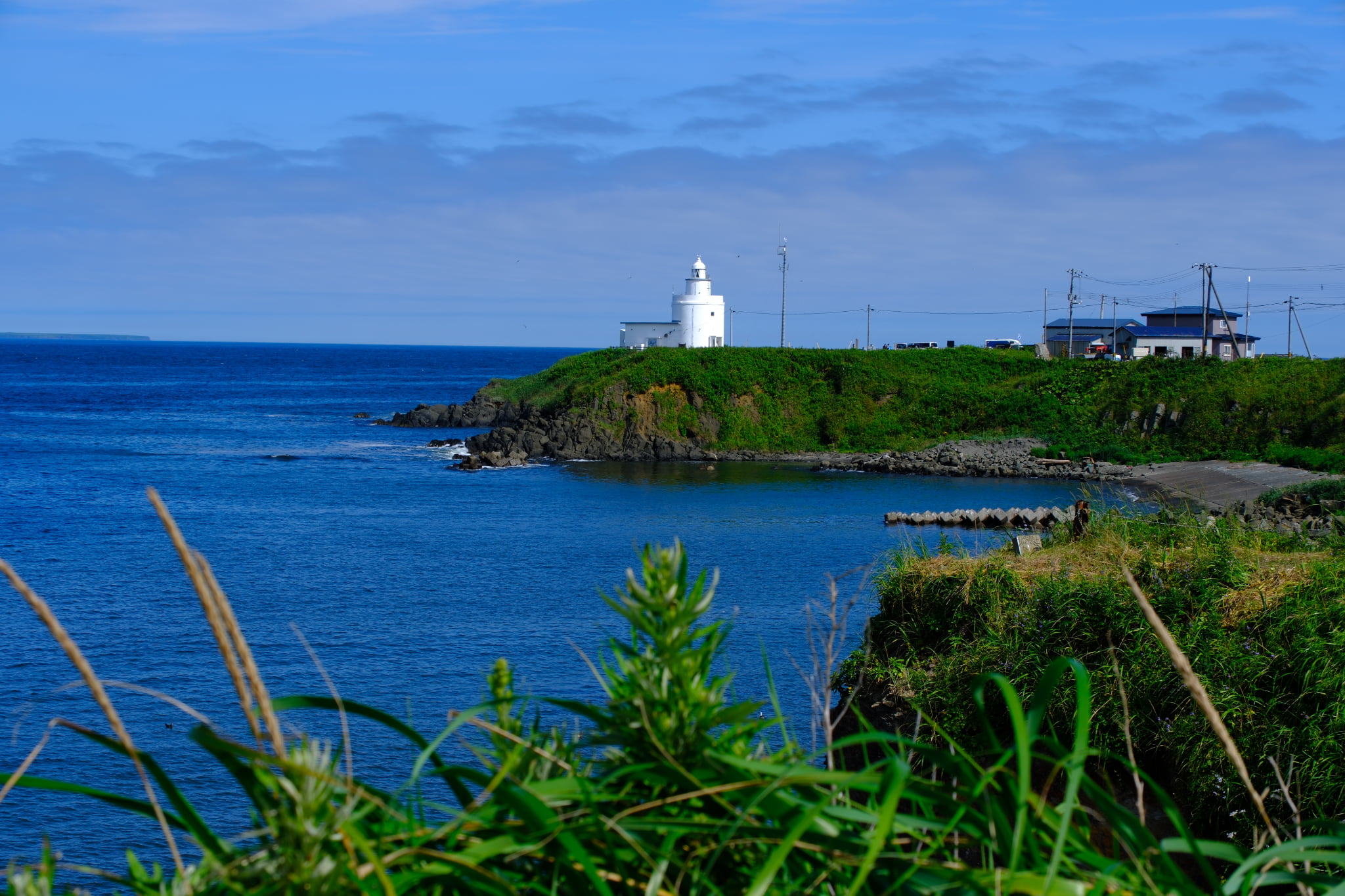
This is the Nosappu Lighthouse, about a 10-minute walk from the Bridge of Four Islands Monument.
It is the oldest lighthouse in Hokkaido.
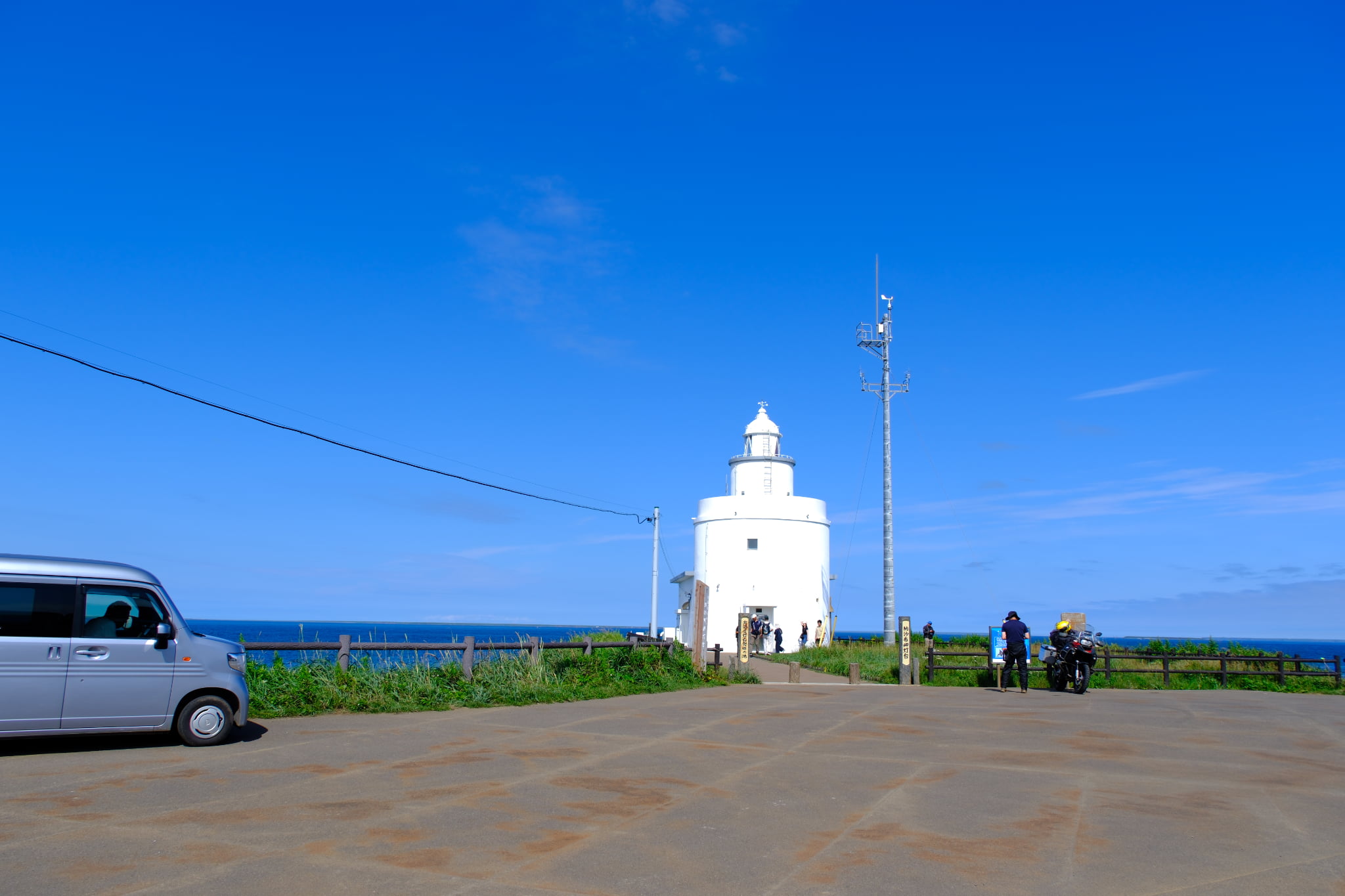
You cannot enter the lighthouse itself.
Museums and Facilities
Around the cape are a few souvenir shops and museums related to the Northern Territories.
The Hoppo-kan (Northern Territories Museum) can be entered free of charge.
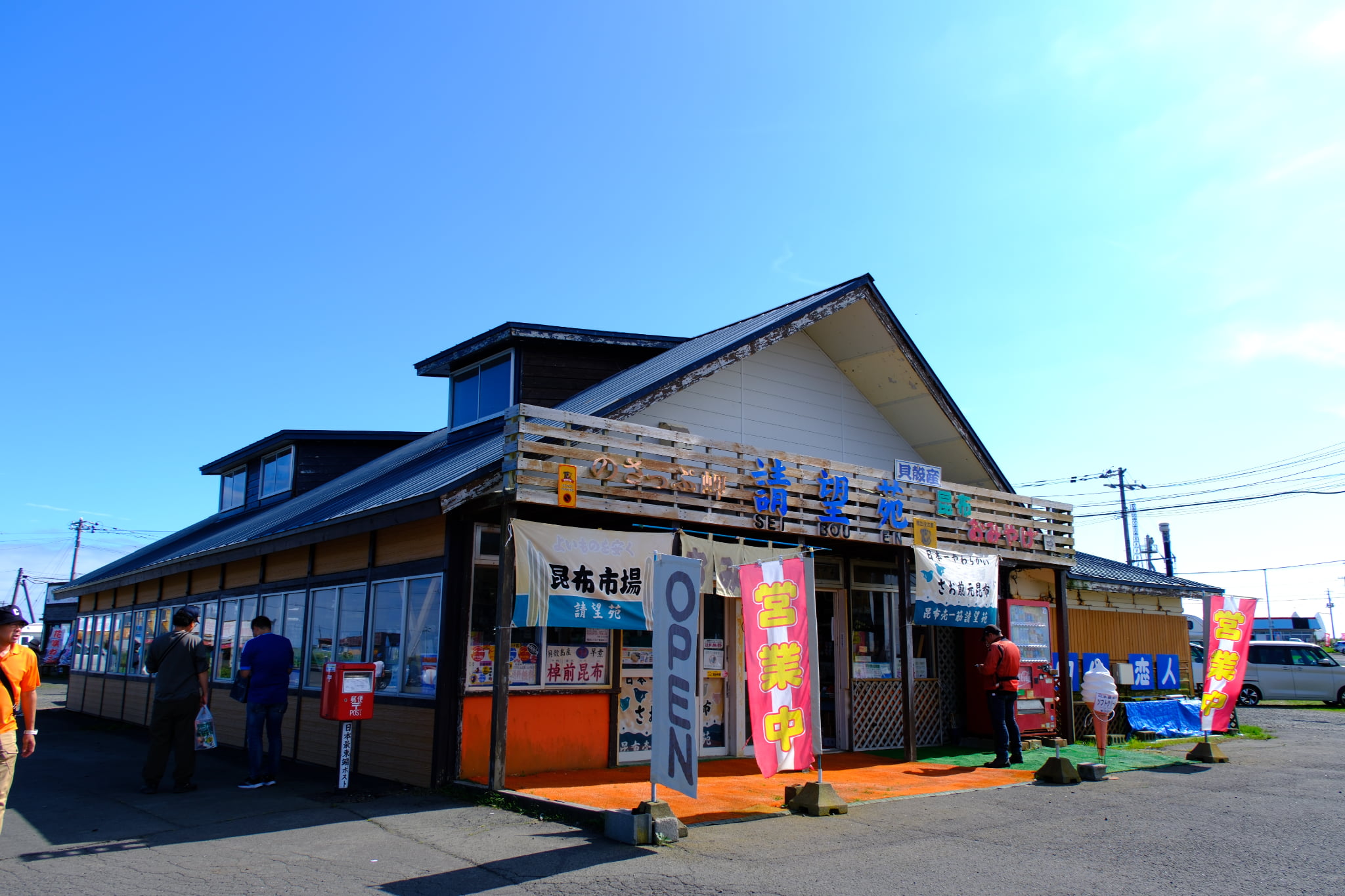
There are also several small souvenir shops and eateries nearby.
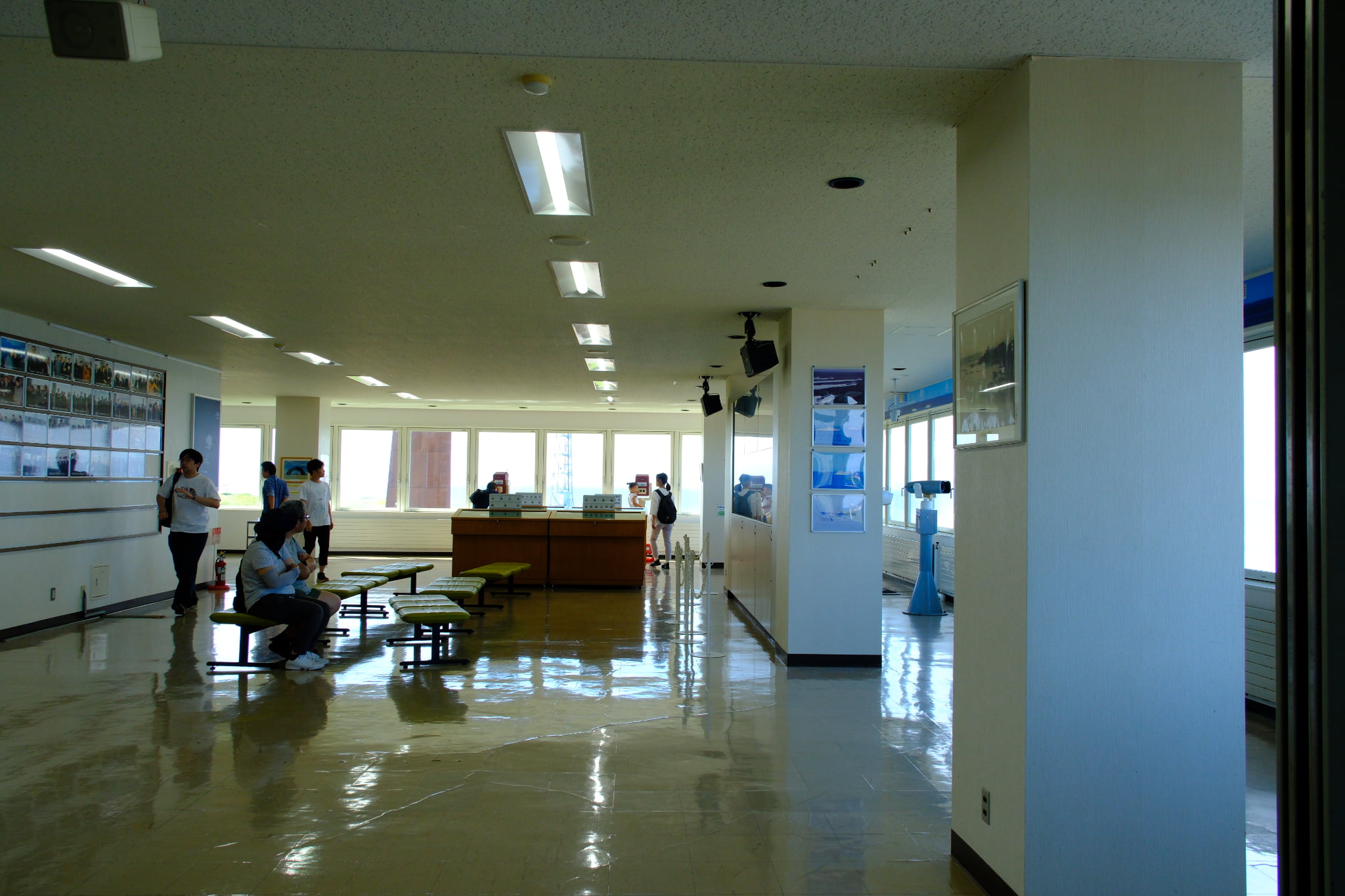
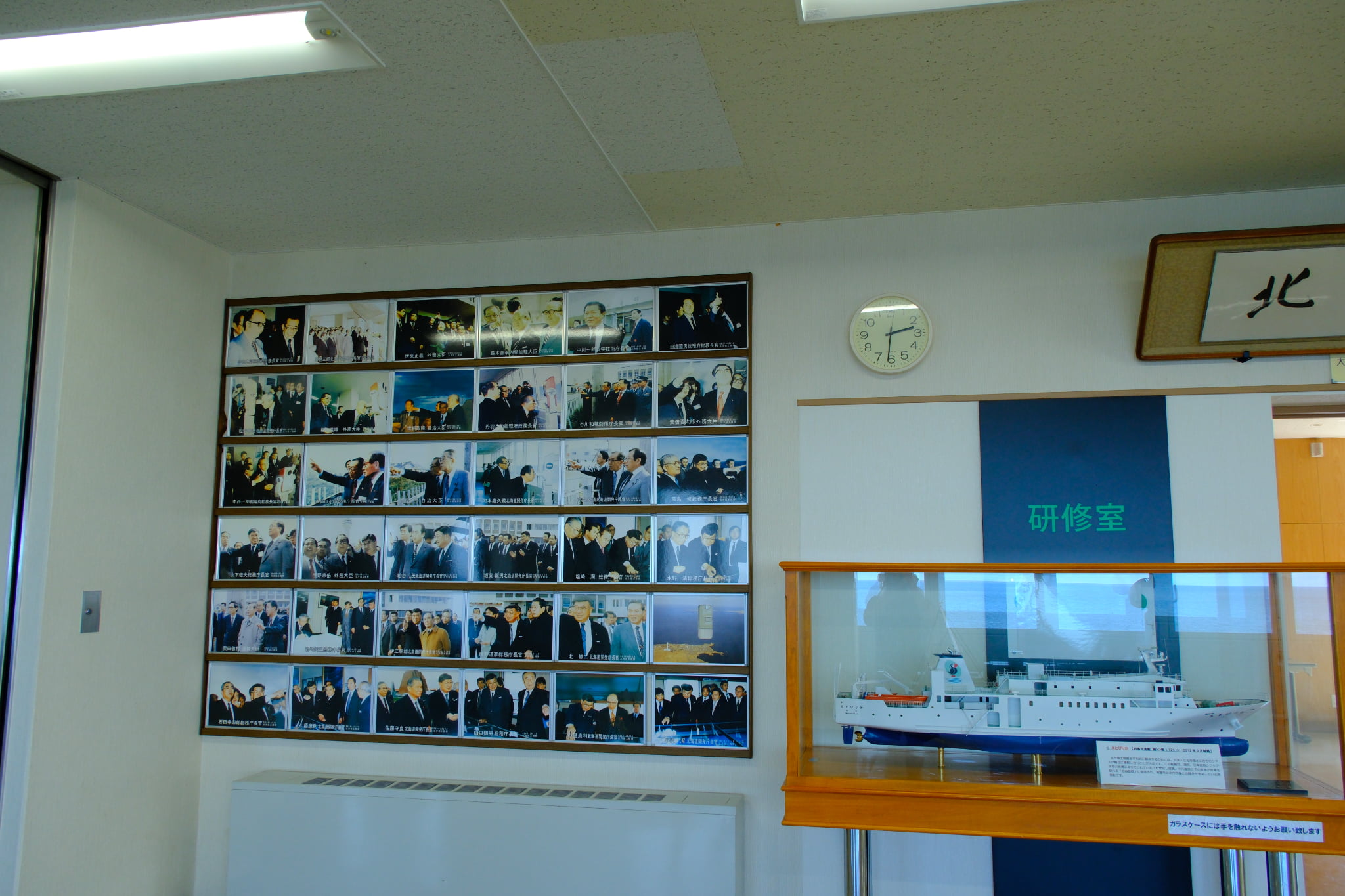
Inside the museum, you’ll find historical photographs and telescopes, offering insight into the past and the surrounding islands.
Hours and Admission
Hoppo-kan (Northern Territories Museum)
Open 9:00 a.m. – 5:00 p.m.
Admission: Free
Closed during the New Year holidays
Nosappu Lighthouse
Open 24 hours
Admission: Free
Exterior view only — the interior is not open to the public
Information in this article is current as of August 13, 2025.
